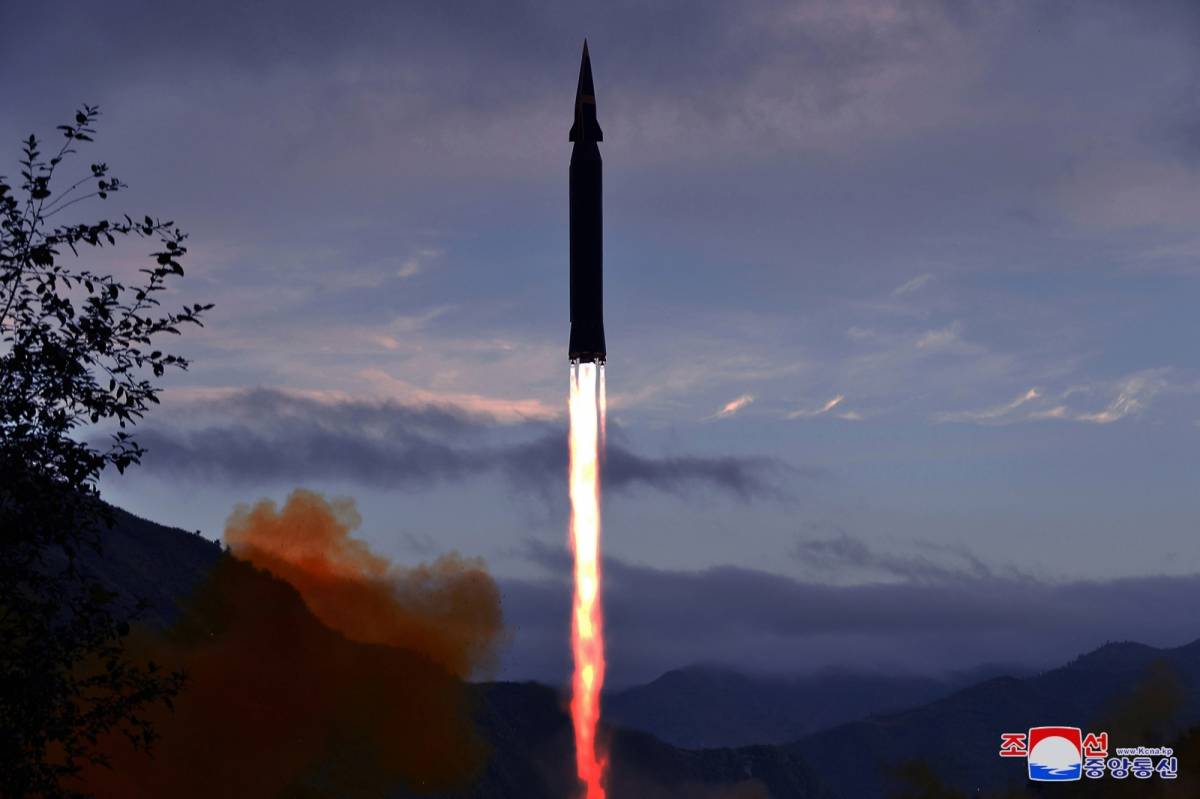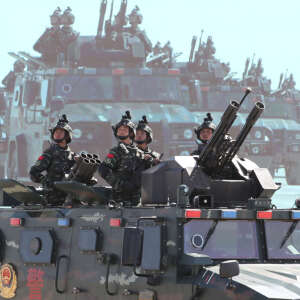The projectile, which circled the planet, sparked concerns among officials in the US, but China insisted the missile launch was for a spacecraft….reports Asian Lite News
China claims it has beaten the US to developing heat-seeking hypersonic missiles that could home in on targets including aircraft carriers and moving vehicles, Daily Mail reported.
The development, which is likely to add intensity to the ongoing arms race between China, the US and Russia, comes after Beijing denied testing a nuclear-capable hypersonic missile in August.
The projectile, which circled the planet, sparked concerns among officials in the US, but China insisted the missile launch was for a spacecraft.

However, now researchers from China’s National University of Defence Technology claim to have developed technology to allow a hypersonic missile to find a target based on its heat signature, the report said.
According to research cited by the South China Morning Post, lead scientist Professor Yi Shihe claimed in a scientific paper published last month that China had made a ‘series of core technology breakthroughs that were proven effective in tests’.
If true, it means China may have overcome the difficulty of developing a heat-seeking system which is capable of working at hypersonic speeds.
The feat is a challenge because the pace of the missile itself generates heat which can interfere with the detection systems.
Hypersonic missiles can reach speeds of up to 21,000 mph and can strike anywhere on earth from space within minutes.
The latest development comes amid experts’ fears that hypersonic missiles could be used to spark World War Three, with Russia, China and the US all working on next-generation missiles, the report said.
Meanwhile, in December, the US had completed the construction of a new long-range radar in Alaska that is designed to give early warnings for incoming ballistic missiles from North Korea and other countries.
Vice Adm. Jon Hill, director of US Missile Defense Agency, said the new long-range discrimination radar (LRDR) will be powerful enough to discriminate or identify lethal objects, such as warheads, allowing the US to successfully intercept such objects, Yonhap News Agency reported on Tuesday.
“There’s a rogue nation there (in the INDO-PACOM region) that is targeting the US, (has) demonstrated ballistic missile capability time and again and very recently,” Hill said in a virtual media roundtable, referring to North Korea.
“So the radar was strategically placed in Alaska, so with this wide field of view that we can capture threats coming from that region,” he added.
His remarks came shortly after the US marked the initial fielding of the new radar, which the MDA director said will likely become fully operational “roughly in 2023” after testing and systems integration.
The US began constructing the long-range radar following a series of missile provocations from North Korea.













